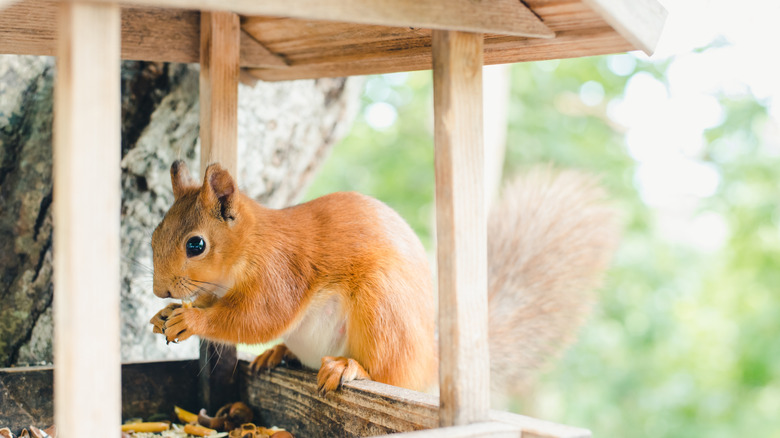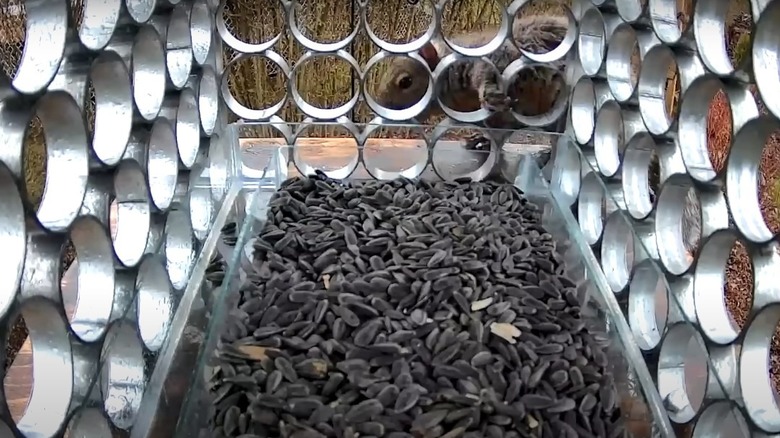How To Build A Bird Feeder That Will Keep The Squirrels Out For Good
We may receive a commission on purchases made from links.
In addition to bringing some color and life to the outside of your home, attracting birds to your yard helps boost plant pollination and keep pesky insects and rodents in check. A well-placed bird feeder keeps them coming back for more. However, if your feeder has been out for more than five minutes, you've probably met the ultimate garden party crashers: squirrels. These crafty little creatures will do anything for a snack, often scaring off the birds before you can enjoy any of the benefits of having a bird feeder in your yard. Luckily, you can take inspiration from YouTuber Chris Notap's video and build bird feeder walls out of metal rings that are big enough for birds to get through but too small for squirrels to raid the place.
To make sure squirrels can't fit through the rings while birds still have free access, you'll want to aim for a gap size that's in the neighborhood of 1¾ inches. The best way to make sure the rings are just to your liking is to cut your own supply out of a single metal pipe. To get the job done, you'll also need a silicone adhesive, like this GE All Purpose Silicone Caulk on Amazon, to glue your rings together. Add in a few other common tools and materials, and you'll be able to build yourself a squirrel-proof bird feeder for under $50.
How to build a bird feeder out of metal rings
Begin by deciding on your preferred ring size, 5-inch pieces should work fine, and mark your pipe for cutting. Depending on how crafty you are, you may already have a go-to cutting tools, but a no-hassle option like this tailpipe cutter from Home Depot might make the job much easier, but it will add to the overall cost. Cut as many rings as you need for your desired bird feeder wall size, and start laying them out next to one another on a flat surface in a shape that forms a wall. Apply silicone adhesive to the bottom of each ring, then press them together to form one side of the feeder. Repeat the process four times to make enough walls.
When you have all the sides of your bird feeder ready, put them together using a silicone adhesive to create a metal ring cage. Then, seal the top and bottom with wood planks, bolting them to the ring structure to stay in place. Add some bird feed in there, place it in your garden, and enjoy a squirrel-free space for birds. While this method does take some work, it's a great option if you want to take matters into your hands instead of buying a top-rated squirrel-proof bird feeder.
For extra protection, mount your feeder at least 5 feet off the ground and 10 feet away from any launching points (like trees, fences, or roofs). Squirrels can jump up to 5 feet and 10 feet between objects, so this out-of-reach placement helps keep squirrels out of your bird feeder for good.

